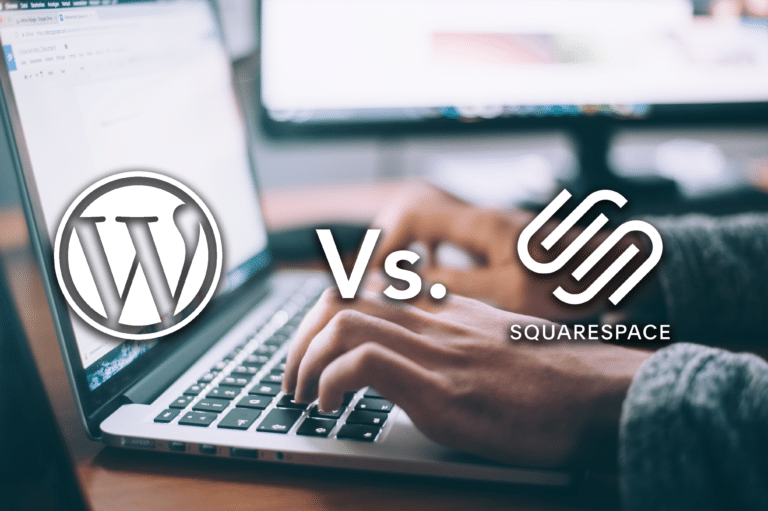The majority of people creating facebook ads don’t know what they’re doing. The problem is two-fold. Primarily, there is a bit of a technical learning curve to the ads manager. Second, they don’t understand the sales funnel and how it relates to digital marketing.
What is a funnel?

This is an integral part of all digital marketing. Companies with beautiful websites, awesome products and great staff can get destroyed by companies with a severely inferior product. Why do they get out maneuvered? Their competitors understand the importance of the sales funnel. If you have a great product and want to serve your customers better, you owe it to them to understand the most important foundations of digital marketing.
I’m sure you’ve seen the self proclaimed “gurus” on facebook that read a book on e-course sales and think they are the authority on [Insert subject]. If you haven’t seen the gurus, consider yourself blessed. The gurus always claim some ridiculous clickbait-y title about their “one-trick” that you can get in their free webinar that just so happens to be starting right now. These type of ads are the highest converting ads because of their enticing offers. But is Facebook ads just a continual source of cringeworthy material? Can your facebook ads be honest and still be successful? Truly successful people generally don’t attribute their success to “One Simple Trick” by the way.
Yes, your ads can be successful, but to be successful you’ll have to understand the conversion funnel that all of the fake gurus are using.
History of the Conversion Funnel
A conversion funnel or sales funnel, has been around for quite some time. The sales funnel was developed in 1898 by Elias St. Elmo Lewis. It has since been a common tool in simple and complex advertising campaigns.
So if you’re selling anything you need to learn how to use funnels.
Why should I be using Funnels for my company?
As previously mentioned, a sales funnel is a lot like a real funnel. It is a visual representation of the way everyday people “funnel down” to become paying customers.
Conversion funnels have existed throughout all history. Think about it. all businesses use them. if you drive past a brick-and-mortar sandwich shop for example they are causing awareness for their brand which is the very first part of the funnel.
Notice in the graphic that awareness is the very top portion then comes interest then comes decision, then comes action.
Understanding Conversion Funnels is more Important than Ever.
Unfortunately we live in an age of funnel abuse. Facebook ad companies are very aware of how to use funnels to market products. The issue with this is that, more than ever we are being marketed to by algorithms that are designed for profitability but not necessarily quality. You may have noticed this, look at your news feed on Facebook. Do you see a lot of self-proclaimed gurus trying to sell you things? If you just see cooking recipes, that’s great. The gurus are taking over Facebook with their funnel hacking methods. I don’t have a problem with people using funnels to sell and legitimate product. However, I have a problem with people using funnels to sell things that are essentially worthless.
When I say they sell something that is essentially worthless, I mean their product is way overpriced. They are Facebook ads team has carefully calculated the cost per conversion, and they are more profitable than the cost of their ad spend. When they reach this point of profitability they can scale the ads until they show them to every possible interested audience on facebook. This is an intelligent strategy that is worth studying. Just because someone abuses the system, doesn’t mean we cannot learn from them.
Why are there so many “Self Proclaimed Gurus” any way?
That being said, high value e-courses are very easy to fake. Social media followers can be purchased and give imaginary influencers the appearance of brand authority.
Therefore, impressionable young Millenials fresh out of college will take their burger king earnings and throw them at programs promising them freedom as long as the program has the appearance of legitimacy.
You Don’t Have to be Annoying
I know that a lot of business owners will be reading this thinking: how can I possibly use a funnel to sell my product? there are a lot of industries that have trouble advertising on Facebook. Some Industries just have better luck with Google ads or simply focusing on their SEO. But most businesses can create a very profitable funnel using Facebook Ads.
I used to run ads for a client and we were experimenting with Facebook ads. We kept on trying to make better, more compelling ads. We tried offering more and more free value to the customers. We even offered incredible discounts to people. It wasn’t until I understood the power of the sales funnel that our advertising strategy started to make any sense at all. We have since seen incredible success on our ads ROI.
In Facebook Ads, Funnels are Everything!
The Facebook Pixel is the key to it all. The Pixel allows you to use funnels more than ever. You can use the pixel to see exactly what people are interacting with and retarget to them. You can also use website visitor information to create a brand new audience that has never heard of you, but has a lot in common with your customers (Lookalike audiences).
This is the power of facebook advertising. Facebook’s targeting has caused some people to be concerned for their privacy. This is a complex topic that I won’t be able to cover in this article. However, the tracking that Facebook gives you as an advertiser is powerful. To be effective on this platform, you must use it.
The Facebook Pixel has created a new way to use the sales funnel as an Advertiser.
“On average it takes 7 interactions for someone to decide on purchasing from your brand”
These 7 interactions are what make up a sales funnel. Advertisers have known this for centuries, but now we have an even more visual representation of tracking the customers every step of the way. Every site visitor has a different journey to become a customer. Above is a sample funnel for a digital marketer like me. (The monkey is from mailchimp, a popular email marketing service).
Now, ignore the small details in each step, look instead at the overall concept. How likely are you to spend money on something that you have never heard of? Think door to door salesman. This should be obvious, but everyone misses it. People rightfully very skeptical of salesmen offering them a product. Even if you have the greatest product in the world, you have to make them believe you first. Grocery stores give out free samples, so should we.
Now the most powerful step in this funnel that was previously very tricky is step 2. Retargeting people based on visiting a particular site is possible with google ads, but not nearly as intuitive. Now, you can very easily use the Facebook pixel to track website visitors and retarget them. Obviously, you are not given any information about the people (I’m still having a hard time locating the ‘hack their microphone’ option), you just know they are interested in your site. This allows you to create a “warm” audience. A warm audience is an audience that is slightly interested in your product.
Wouldn’t you rather present your sales pitch to a large group of people who have heard of your company than to present it before a “cold” audience? Audience tracking works the same way and ads on Facebook are built around creating custom audiences.
Example Funnels
Here are some example funnels to give you ideas. Below, we have made a form where you can create your own custom funnel by answering 4 questions.
Note: This can work with any business. However, certain businesses may want to experiment with google ads instead.
Note 2: Generally speaking, the higher your conversion value (end goal of purchase) the higher your ad spend will be. In other words, lawyers will pay more.
First, you’ll need to understand what a lead magnet is. A lead magnet is a value proposition that you will give in exchange for someone’s email. Someone’s email is an incredibly valuable piece of information. They won’t unsubscribe from your mailing list unless you annoy them.
Pro Tip: Don’t be annoying.
Also, contrary to what you might think, a lead magnet doesn’t have to be virtual. Ecommerce sites regularly use cheaper products as a way to gain someone’s email. Giving products away, or using “loss leaders” can very often be a great way to spend advertising dollars.
So let’s get to the questions for creating your first funnel with 4 examples.
Questions:
- Who are you?
- Who is your ideal client/customer?
- What is your product?
- How can you offer upfront value (Lead Magnet)?
Wedding Photography
Jacques is a professional wedding photographer (In the southeast). His ideal client is people who get married and can afford his rates. His product is photography and videography at their wedding. He is unsure what to offer as a free value for lead generation because his clients aren’t really interested in ebooks.
So, he has his customer in mind and already has a great product, great! Now let’s figure out a way for him to offer upfront value to potential clients to generate some leads!
He is marketing towards people who are planning a wedding. This makes it easy to create a value proposition for his customers. We can use “10 Wedding Planning Tips for weddings in the south ” or “2019 Wedding Venue Guide.” Creating the PDF is no easy task though, here’s an article on doing just that for photography business lead magnets.
Good resource for photography lead magnet making:
https://primefocuslab.com/pmm-085-photography-lead-magnets/
So now that we have his lead magnet ready to go, let’s build the campaign out. Start with a traffic ad to a blog post, or your pictures. Make your actual ad copy clear and to the point about your service. You want traffic to your site, but you don’t want people going to your site who have no intention of purchasing your product.
So let’s say you go through and you’ve captured 1000 people who seem interested in your service. Odds are, some of them are planning a wedding, because you targeted them with your custom audience and ad copy.
Now you can begin to capture their email addresses by offering your free guide about wedding venues in the region they are in. Assuming your information is good, they feel like you care about them, and you do. Next you can begin to bombard their inbox. Except, you aren’t going to do that. You can do this manually at the beginning, but later on you can create drip campaigns, that do this automatically.
https://www.singlegrain.com/email-marketing/the-ultimate-guide-to-drip-campaigns/
Follow up with them a few times with more free value (such as blog posts). Make sure the emails that contain content are directed toward your target market and not towards photographers or something. And remember, try not to be spammy.
Once you’ve touched base with them a couple of times, make them aware of an offer you have. Jacque’s offer in this phase is a free bridal photography session with the purchase of a wedding. Bam, it’s a successful customer.. Eventually. Do you see how the funnel works now?
Let’s take this to a market that people don’t think about a lot. Can roofers use Facebook to market their services?
Roofing
Carl is the owner of a construction crew that specializes in roofing in southern New Mexico. His ideal client is people who need a new roof. He is growing his business and needs new clients. His value proposition is a free estimate.
He does the same process, but uses Google Ads instead. He creates leads who are interested in his business and then sends them an offer through email to help sweeten the deal.
Remember:
66% of online consumers (15 years or older) made a purchase in the last 12 months because of a marketing email.
Free Funnel Recommendation
If you can’t visualize your custom funnel, fill this form out to get a free funnel recommendation. You may just enter our funnel, and it could be “funnel-ception.”



